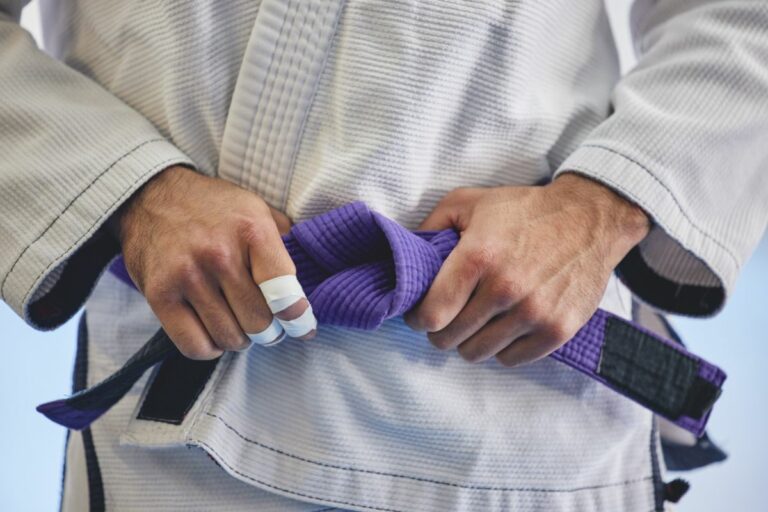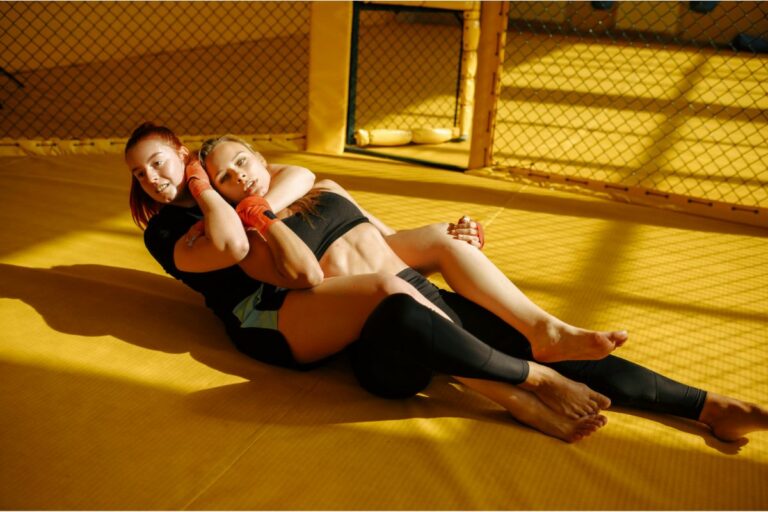Judo Vs BJJ: What Is The Difference?
Judo and jiu jitsu are two of the most popular forms of martial arts practiced today.
Chances are if you visit a martial arts class these are two fighting techniques they will teach both being incredibly versatile for a variety of situations and easy to start learning, but hard to master with a very high skill ceiling.
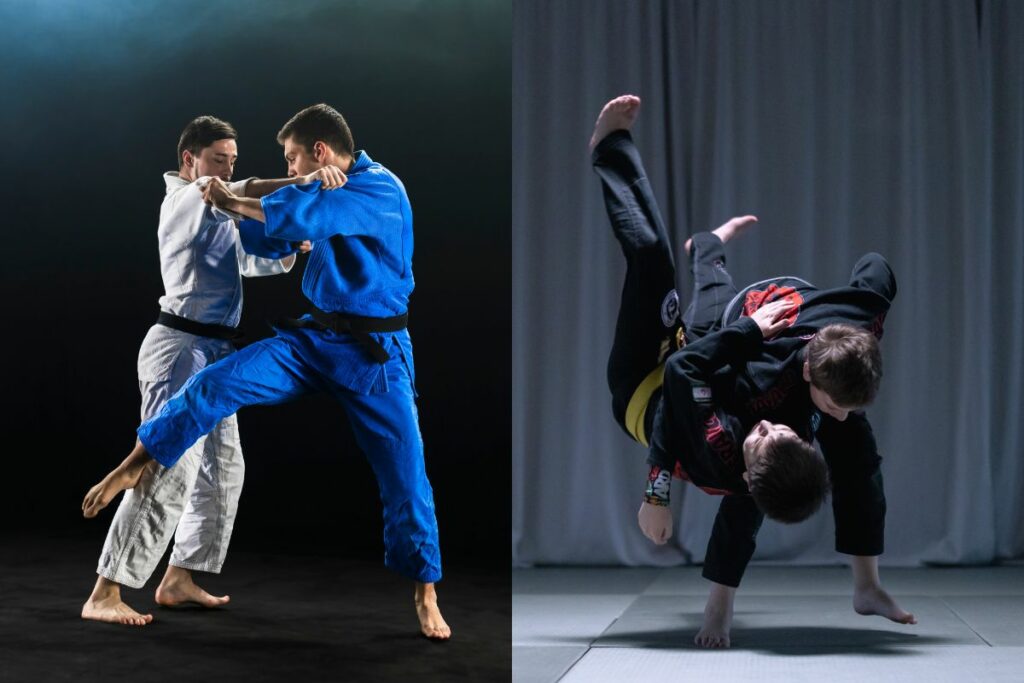
In fact, Brazilian Jiu Jitsu and Judo used to be the same martial art, both are very practical forms of self defense and can also be used for sporting.
Even the teachings are extremely similar aiming to install humility, self confidence and a gentle style of defense into its users.
Throughout the years however as the two techniques have become more refined and modernized, they retain similarities but have grown different in a few other areas.
This is crucial to know for anyone interested in learning martial arts in order to recognise the style you feel would compliment you most and that you would be comfortable learning for a prolonged period of time.
What Is Judo?
Meaning ‘Gentle way’, judo was traditionally a Japanese combat sport with the aim being to throw a combatant to the ground successfully, or to otherwise immobilize and subdue one’s opponent.
Judo has evolved in complexity since it was originated, however it still retains the same principles.
The style includes a variety of rolls, falls, throws, hold downs and chokes with a few strikes. The main focus however is throwing and groundwork.
The throws are divided into two groups:
Standing Techniques
These include techniques utilizing the hands, hips, feet and legs.
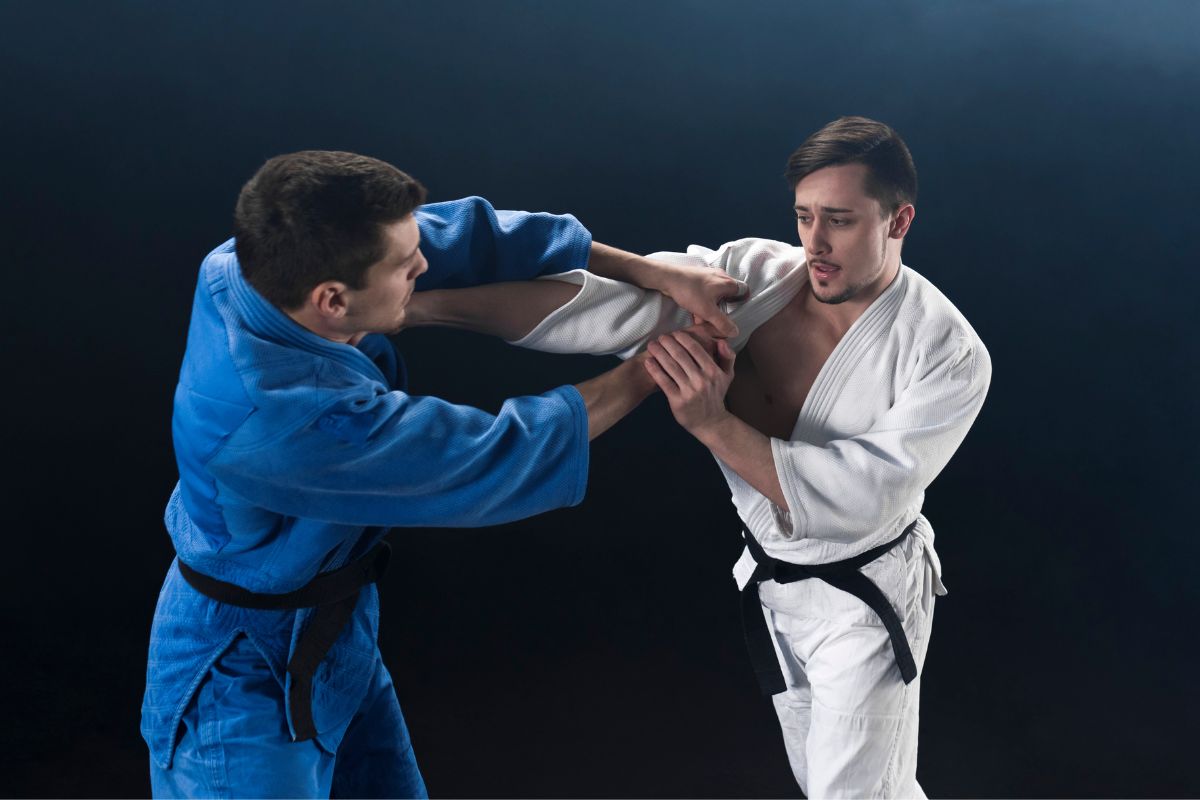
These are the most popular kinds of throws and are made up of techniques where the thrower will often not fall of their own free will and instead simply aim to get the opponent on the ground while staying upright.
Sacrifice Techniques
These refer to other types of throws that involve the thrower falling directly on their back or to the side in order to execute a throw on their opponent.
Because of its throw centered approach, practitioners of judo must be strong and practice their balance and grip in order to pull off many of the techniques and it is both practiced casually and also at tournament levels with its own rules and regulations to follow.
What Is Brazilian Jiu Jitsu?
The reason BJJ shares so many similarities with judo is because its origins come from Japanese judo being exported to South America in the early 20th century where it altered certain techniques and molded new ones to create a new martial art altogether.
BJJ is based on a combination of dynamic and explosive movements mixed with pressure based isometric pushing, pulling and holding.
It is a sport primarily based on ground fighting and submission holds, and was developed in order for weaker individuals to be able to utilize their grips and positioning to take down bigger opponents.
It is a grappling based martial art with the central theme of controlling a resisting opponent in ways that force him to submit.
Because this is easier to do on the ground, much technique involved in BBJ involves groundwork, these techniques include the different ‘Positions’, ‘Transitions’ and ‘Escapes’.
All techniques within these categories help a combatant gain control over their opponents movement and force them into a position of submission.
Techniques
Both forms of martial arts share many techniques such as chokeholds, joint locks and throws and can both be fought on foot and on the ground, however they both require stress to be applied to different parts of the body for their intended purpose.
Judo is primarily centered on throws and is therefore all about grips and strength.
Ground fighting can happen in judo but it is never a priority, if a round ends up on the ground in judo you only get 30 seconds to submit or pin an opponent before a restart.
In contrast, BJJ is centered towards the ground rather than avoiding it. The main game plan of BJJ is dominating an opponent by controlling their movements and rendering them helpless.
It is therefore less about frontal strikes and throws and more about locking and gripping techniques as well as ways to move around your opponent.
In fact many BJJ schools and classes will let combatants start the fight on the ground to get straight into groundwork, however tournaments often require fighters to stand first before getting to the floor throughout the match.
Competitive Rules
Both judo and BJJ have their own popular tournaments that test combatants against each other. While the fighting styles can seem similar, the actual rules when it comes to competitions are quite different for the two.
For starters, a judo match is won by throwing an opponent on his back or pinning them for a set period of time. In BJJ the key to victory is submission and a points system.
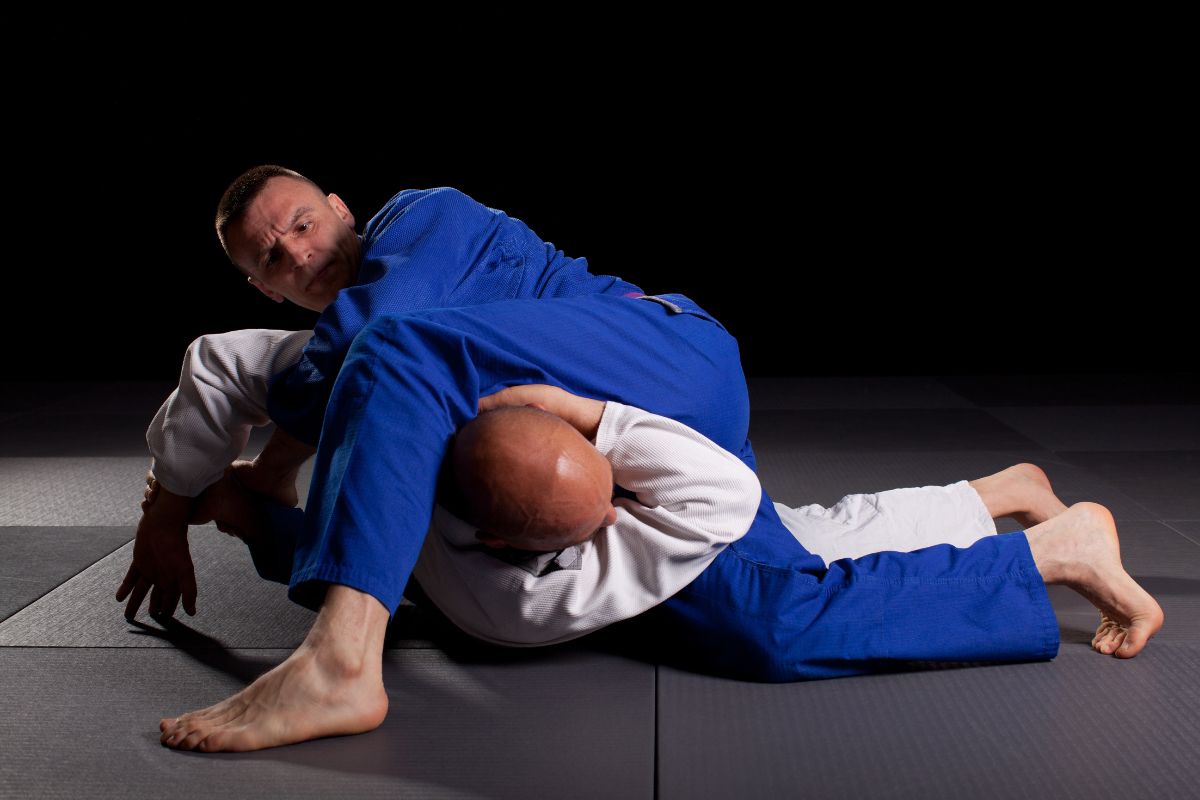
Competitions therefore emphasize throwing in judo far more than it does in BJJ which is centered around grappling and submission techniques.
Within judo competitions, if you manage to throw your opponent with considerable enough force or hold them down for twenty seconds you will win the fight by ‘Ippon’.
However, a judoka can also win by scoring points or ‘Waza-ari’ through throwing an opponent with not enough force and holding an opponent down for under 20 seconds.
In BJJ competitions it is entirely based around a scoring system. A certain amount of points will be gained for executing certain techniques, a few of these are as follows:
- 2 points for takedown
- 2 points for a sweeping
- 3 points for passing opponents guard
- 4 points for back control
There are a huge variety of ground techniques in BJJ which can all grant a combatant a different amount of points. The other way a fight ends in BJJ is if an opponent taps and surrenders the match.
Another key difference is the time limit, in judo there is no time limit and practitioners are expected to keep the pace going with the referee only resetting the play if they feel the match is not progressing.
In BJJ, there is a time limit for matches because it can be easy for combatants to reach a stalemate and stall.
This also works well to allow the fight to go on for longer so both combatants can pick up more points to get the victory in the end.
In terms of techniques that can and cannot be used, BJJ practitioners can use judo moves without penalty, this includes judo throws, passing guard and back control.
However this is not the same when reversed, there are many techniques in BJJ that would incur a penalty if used in judo such as holding an opponent’s wrist or using two hands to break a grip.
Uniform
At first glance, the common gear worn for judo and BJJ is extremely similar and can be mistaken very easily.
The primary difference is weight, the gear worn in BJJ is heavier than traditional karate and taekwondo uniforms, however kimonos worn in judo are often quite a bit heavier and more durable in order to withstand more punishment from heavy throws.
Another key difference is in the levels of variety, BJJ allows for far more colors in outfits with tournaments allowing blue, black and white kimonos.
There is even a subset of fighting in BJJ called ‘no gi BJJ’ where combatants ditch the clothing and must rely on firmer grips and handling techniques, making for a whole new sport entirely.
Belt System
The belt system of fighting experience is shared in most martial arts, and this is the case with judo and BJJ with just a few minor differences.
There are fewer belts in BJJ, beginning with white and going down to black.
Judo has a much more complex system than this separated by a ‘Kyu’ and ‘Dan’ grading system which can more accurately pinpoint the exact level of experience of a combatant.
In judo, once a fighter reaches black belt they then start as ‘First dan’ where they then must go through the ranks.
Reaching sixth dan then earns the combatant a red and white belt and tenth dan onwards allows the fighter to use either a white, red or black belt.
Classes
Both judo and BJJ classes go through similar procedures and teaching styles, however what is actually practiced in classes and how it is done is a little different.
For judo, classes often last from one to two hours and will have a standing (tachi-waza) portion of the training separate from the ground (newaza) portion.
Technique instruction and sparring is done primarily on foot to get to grips with new techniques and becoming comfortable with throws.
BBJ classes are more centered on rolling as it’s main way of teaching and sparring. This is a casual but still focused way to experience and react to techniques first hand which is the best way to pick up and learn a martial art.
While prices obviously can vary, BJJ classes also often cost more than judo, however this is not by much so don’t let it dissuade you from picking up one style or the other.
Popularity
Both styles are widely practiced, however in America on the whole judo is seen as more niche than its BJJ counterpart.
It can be hard for example to find a gym or academy that is wholly dedicated to teaching judo, however there are many classes dedicated entirely to BJJ.
There are two main reasons for BJJ’s heightened popularity, one is the history of martial arts in America.
First karate took over popular attention in the 1960’s, then kung fu in the 70’s and from the 80’s onwards, BJJ and krav maga have grown to become the combat craze.
Secondly is popular culture. BJJ has been included in all sorts of media including films, television and radio, and over the last decade has skyrocketed in popularity thanks to advocates speaking out about the sport on social platforms and podcasts.
Difficulty
How quickly you will be able to pick up either judo or BJJ and how long it will take you to be efficient at either one will depend majorly on the strength and indetermination of the user as well as the teacher.
With enough time and practice either one can be practiced and enjoyed, however on the whole it is often agreed that judo comes easier than BJJ because it simply requires using the body to sweep, flip and throw.
BJJ on the other hand can involve different types of movements that would never be considered before so it can take a bit more time learning of each and every technique, along with how many points they would score in competitions and how to pull each off successfully.
Additionally, before someone enters into judo they have already spent their entire life learning how to balance even if they don’t realize it, so there is at least some experience everyone takes with them when they begin practicing judo.
BJJ on the other hand is often completely unknown territory for most people beginning, and this shows itself in the fact that a combatant with even 2 months of experience will be able to easily submit someone with little experience on the ground.
Don’t let the difficulty dissuade you however, each style has its intricate details that need to be taken into account so you can choose one that fits your personality and strengths the most.
Summary
Both judo and BJJ are great choices for martial arts to pick up.
They are both excellent forms of self defense having been refined over their long history, and are now in a position where they are regularly practiced and taught.
Therefore if you’re new to the sport, knowing the intricate details and slight differences between the two can help you make an informed decision on which would be the most enjoyable to learn and practice for you.




![[EXPLAINED] What Is Jiu-Jitsu? | The Best Martial Art](https://mmaboxx.com/wp-content/uploads/2022/06/EXPLAINED-What-Is-Jiu-Jitsu-768x512.jpg)
